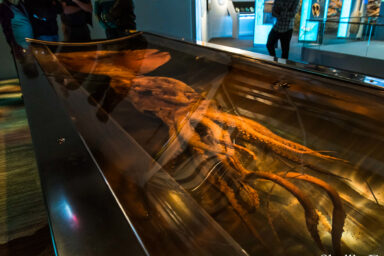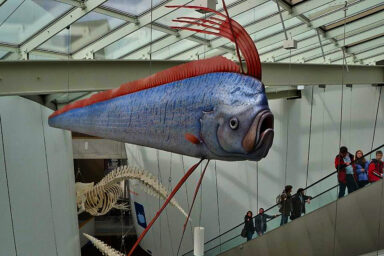PICKS are stories from many sources, selected by our editors or recommended by our readers because they are important, surprising, troubling, enlightening, inspiring, or amusing. They appear on our site and in our daily newsletter. Please send suggested articles, videos, podcasts, etc. to picks@whowhatwhy.org.
Failure to Prevent Pandemics at Source Is ‘Greatest Folly,’ Scientists Say (Maria)
The author writes, “Preventing future pandemics at source would cost a small fraction of the damage already caused by viruses that jump from wildlife to people, according to scientists. Each year on average more than 3 million people die from zoonotic diseases, those that spill over from wildlife into humans, new analysis has calculated. Stopping the destruction of nature, which brings humans and wildlife into greater contact and results in spillover, would cost about $20bn a year, just 10% of the annual economic damage caused by zoonoses and 5% of the value of the lives lost. … It details three key actions: global surveillance of viruses in wildlife, better control of hunting and trade in wildlife, and stopping the razing of forests. … The analysis, published in Science Advances, uses stark language that is unusual in a scientific journal.”
Staff at Dem Firm Revolt Over Work for Sinema (Reader Steve)
The author writes, “Since the beginning of 2020, Arizona Sen. Kyrsten Sinema’s reelection campaign has paid the Democratic consulting firm Authentic nearly a half million dollars for digital work and list acquisition. Inside the firm, staffers have revolted over the contract, expressing shock and agitation that a company that professes fidelity to a set of progressive values has worked alongside a lawmaker many believe are standing in the way of progress on those values.”
Biden Has Reversed a Trump-Era Rule Requiring Pro-American Art in Federal Buildings (Dan)
From Artnet News: “President Joe Biden has reversed a Trump-era order requiring that any visual art added to government buildings must portray American historical figures or ideals — and not be abstract. The new document, announced by the General Services Administration (GSA), amends the provisions of the Art in Architecture program, which commissions visual art in federal buildings nationwide. The updates effectively abrogate the narrow stipulations of style and subject matter put in place by the previous administration.”
The Great Siberian Thaw (Laura)
The author writes, “Around eleven and a half millennia ago, the last ice age gave way to the current interglacial period, and temperatures began to rise. The soil that remained frozen year-round came to be known as permafrost. It now lies beneath nine million square miles of Earth’s surface, a quarter of the landmass of the Northern Hemisphere. Russia has the world’s largest share: two-thirds of the country’s territory sits on permafrost. In Yakutia, where the permafrost can be nearly a mile deep, annual temperatures have risen by more than two degrees Celsius since the Industrial Revolution, twice the global average. As the air gets hotter, so does the soil. Deforestation and wildfire — both acute problems in Yakutia — remove the protective top layer of vegetation and raise temperatures underground even more.”
Antimicrobial Resistance Is a Leading Cause of Death Globally (Mili)
The author writes, “Bacterial infections that don’t respond to treatment are a leading cause of death around the world. In 2019, antimicrobial resistance caused an estimated 1.27 million deaths, researchers report January 19 in the Lancet. More people died from untreatable bacterial infections that year than from HIV or malaria. Overall, bacterial antimicrobial resistance played a role in an estimated 4.95 million deaths globally, including the 1.27 million directly caused by resistant infections, the study found. The estimates are based on an analysis of hospital, surveillance and other sources of data covering 204 countries and territories by an international group of researchers called the Antimicrobial Resistance Collaborators.”
Scientists Found a Fleeting Particle From the Universe’s First Moments (Sean)
From Popular Science: “As atoms and subatomic particles swirl and crash into each other within the magnetic whorl of CERN’s Large Hadron Collider (LHC), the detectors watching their collisions and the high-energy debris they produce turn what they’re seeing into data — a lot of data. The vast majority of that data is fluff that CERN automatically filters out. But each year that LHC runs, CERN estimates, produces 90 petabytes of saved data — enough to fill up 90,000 typical 1-terabyte hard drives. CERN, in the fashion of a 1960s space opera, stores much of it on giant banks of magnetic tape in a glossy room near the French-Swiss border. It’s too much data for any human to easily sift through.”
‘Worthy of a Bond Villain’: The Bizarre History of Libertarian Attempts to Create Independent Cities (Dana)
The author writes, “Late last year, El Salvador’s president Nayib Bukele announced plans to build ‘Bitcoin City’ — a tax-free territory in the country’s east. The city will use the cryptocurrency and be powered by the nearby Conchuagua volcano. According to Bukele, there will be: Residential areas, commercial areas, services, museums, entertainment, bars, restaurants, airport, port, rail [..] [but] no income tax, zero property tax, no contract tax, zero city tax and zero CO2 emissions. Whether or not Bitcoin City eventuates, it joins a long and bizarre history of libertarian-inspired attempts to start independent cities and countries.”



